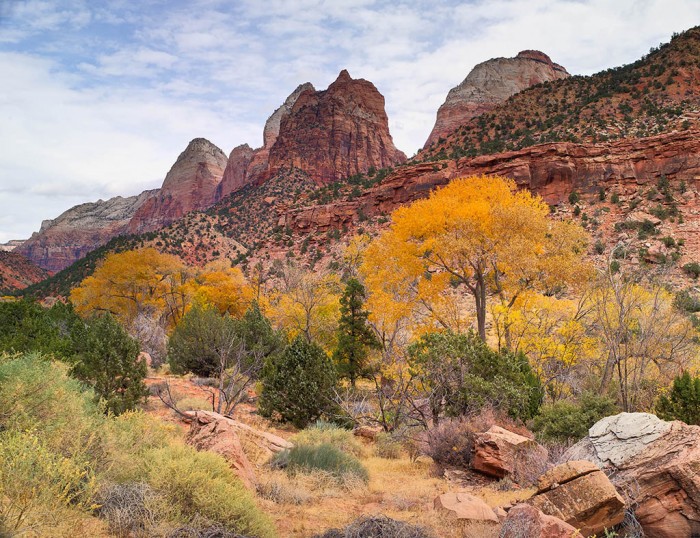
Researchers discovered that an ancient geological landslide created Zion National Park.
A new geological study conducted reveals how Zion National Park was created. Researchers at the University of Utah discovered that an epic rock-avalanche obstructed the course of the nearby Virgin River creating the lake. Zion National Park stretches through the counties of Iron, Kane, and Washington.
Investigators studied the Sentinel rock formation of the west wall of Zion Canyon, and found that a major geological landslide happened 4,800 years ago. This led to nearly 10 billion cubic feet of Kayentena and Navajo sandstone to restrict the flow of the Virgin River and create a 2-mile-long lake that has existed for over 700 years, according to a Tech Times report.
The sedimentation created a level foundation without any jagged slopes typically found in these types of rises. Jeff Moore, geology professor from the University of Utah and one of the study’s co-authors, makes an analogy: the immensity of the rockslide equates to Central Park in New York being buried under 275 feet of rubble and 90 times the volume of concrete used to construct Hoover Dam.
Researchers also discovered that the Sentinel, currently 7,157 high, rose beyond these heights prior to the landslide. With the collected data, computer simulations were used to provide further perspective the phenomenon. The avalanche tumbled at an average speed of 112 miles per hour peaking at 180 to 200 miles per hour within 20 seconds.
Scientists infer that the geological event led to two different outcomes—but a double-edged sword, nonetheless. One is the natural beauty that can result from such prehistoric activity, and the second is the direct opposite—the realization of just how damaging the cataclysm would be if it happened today.
But analysts indicated that a related phenomenon is unlikely to transpire in the near future.
The study’s results were published in the journal of Geological Society of America, GSA Today.
Image credit: Wikipedia Commons CC BY-SA 3.0.

Leave a Reply